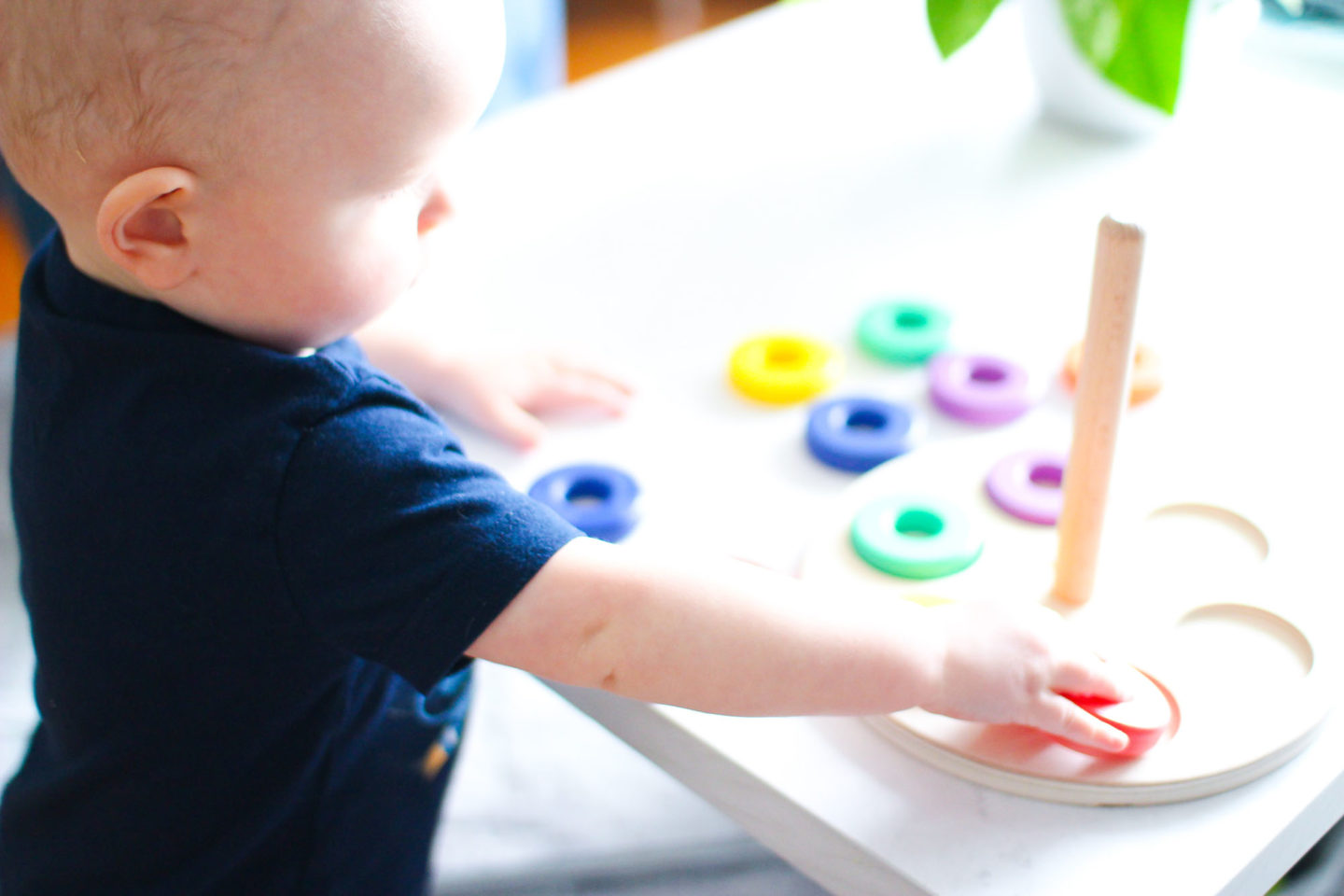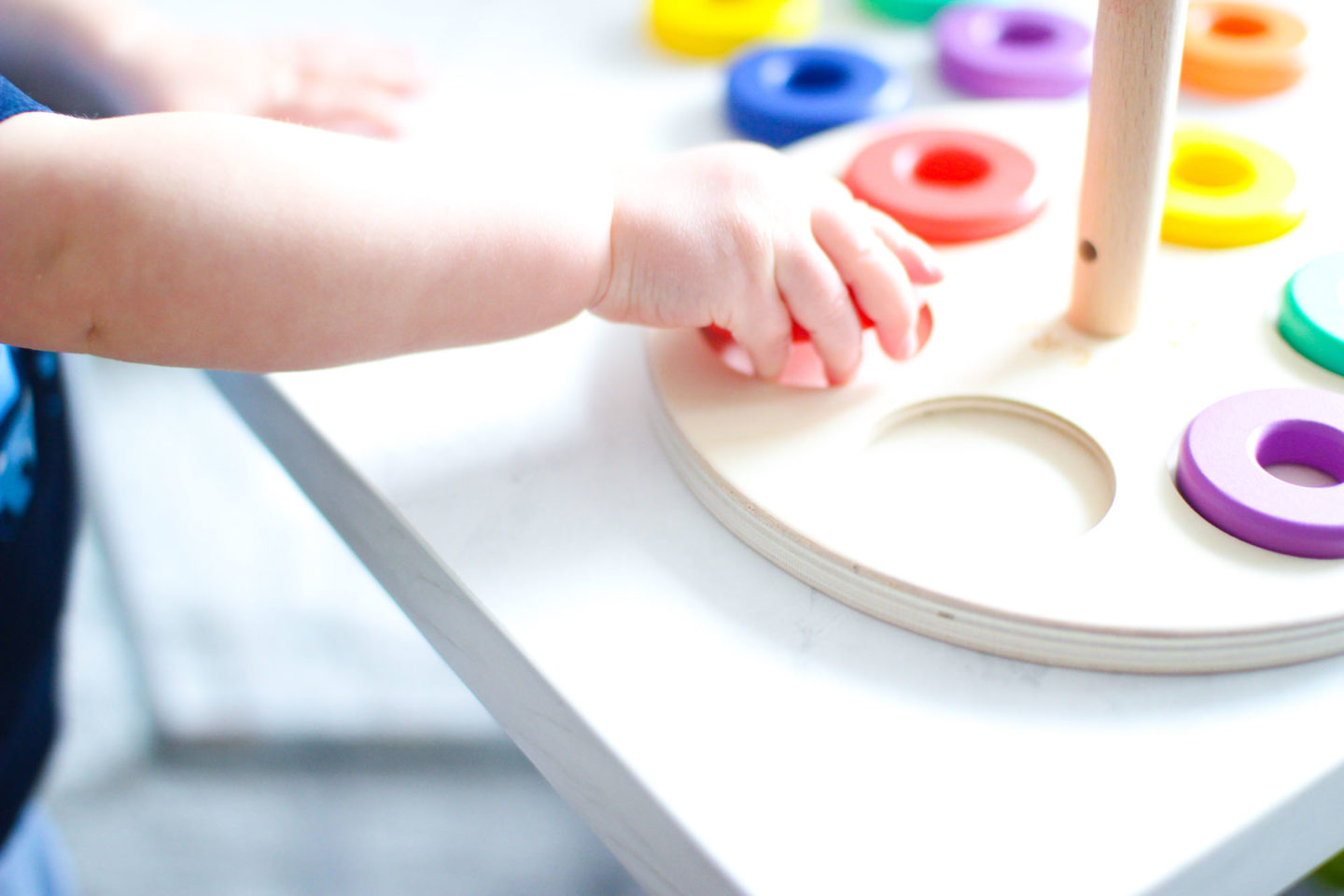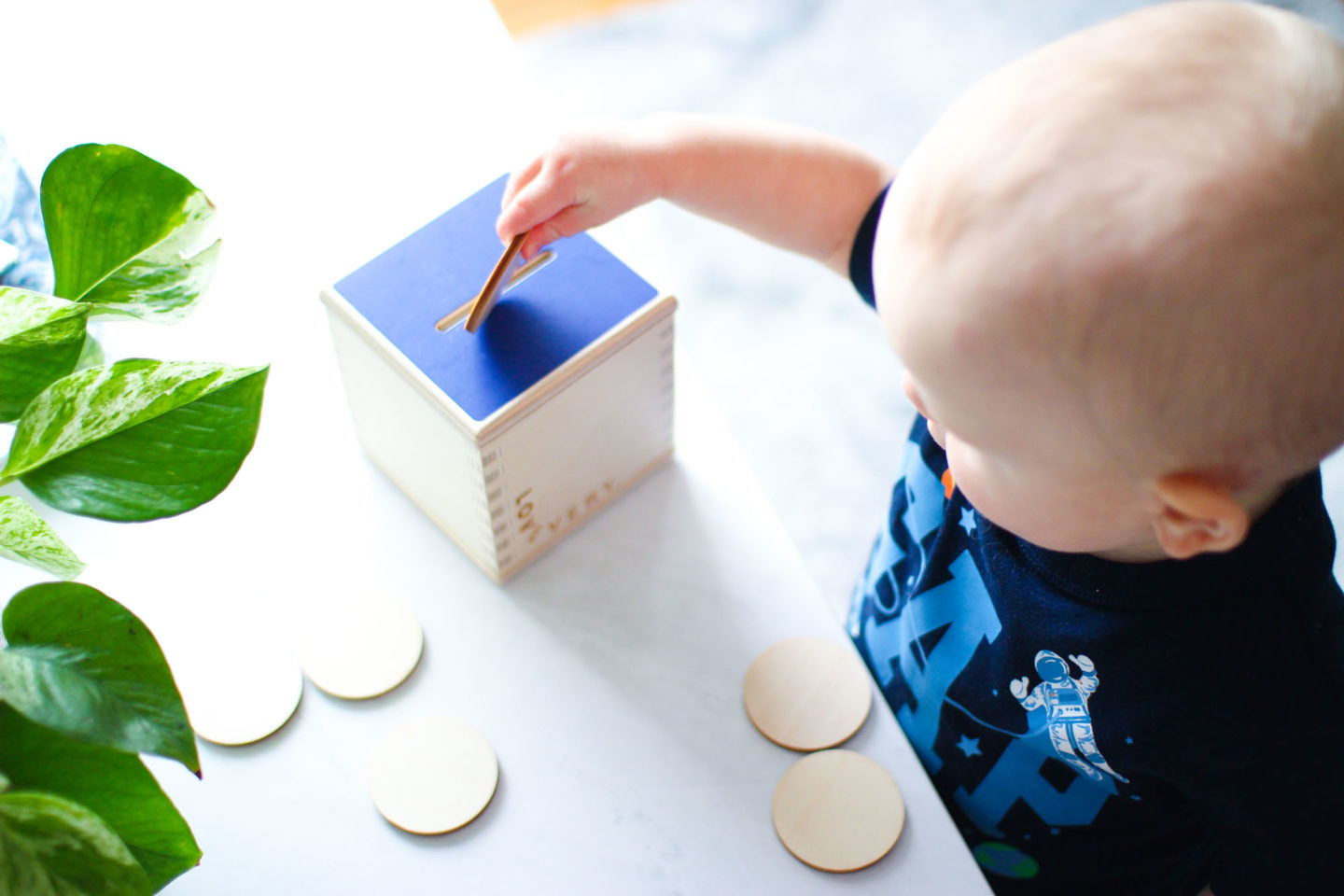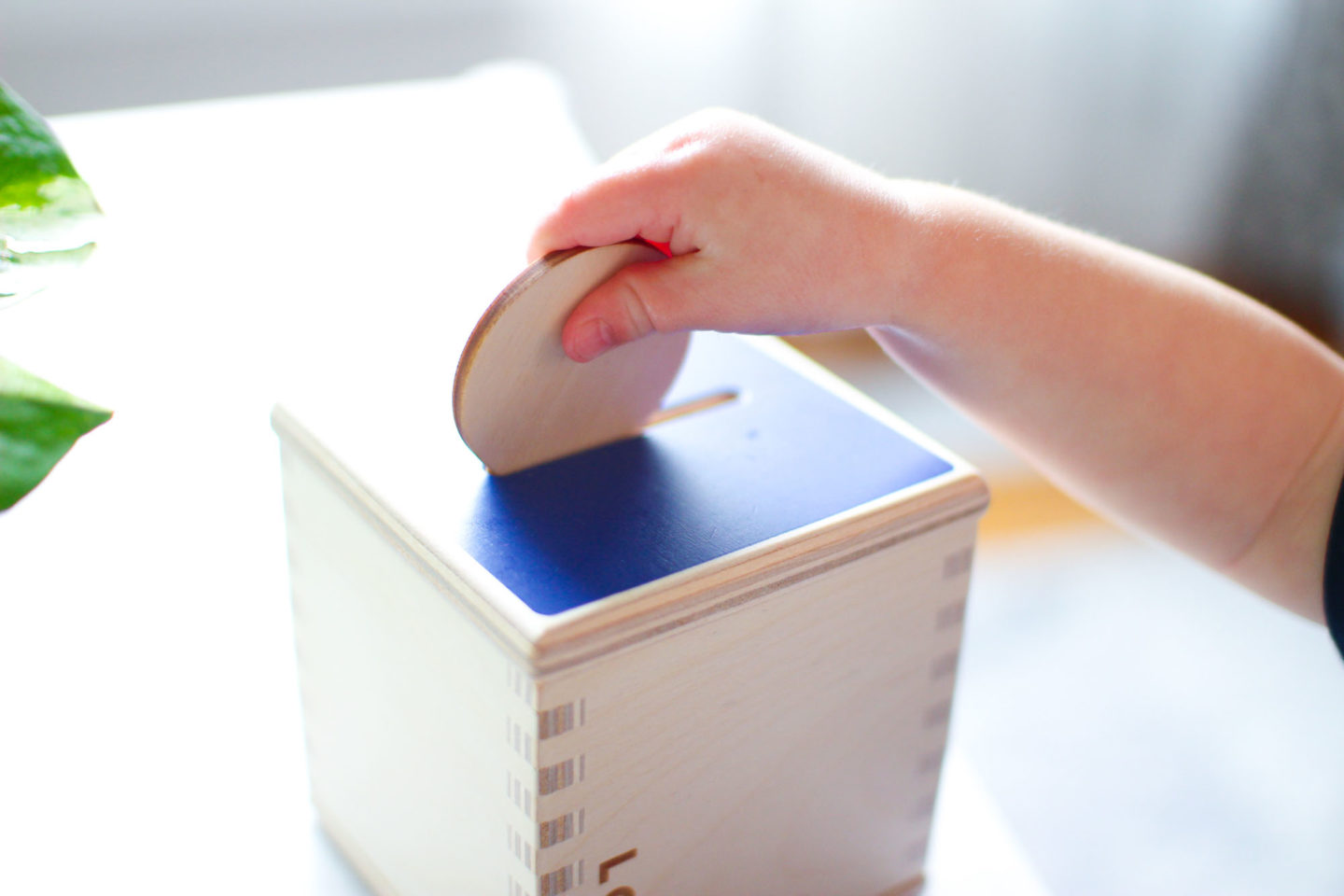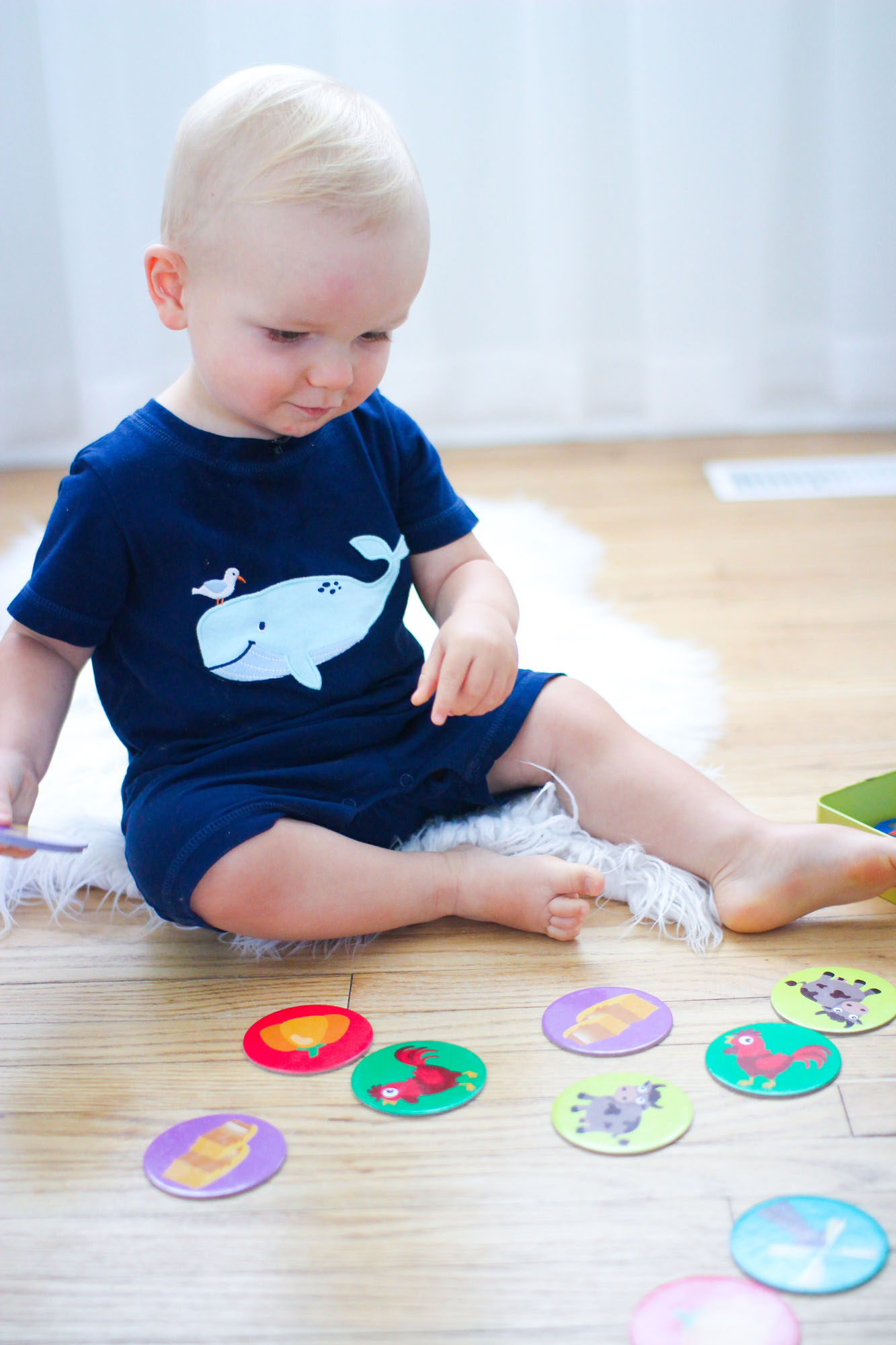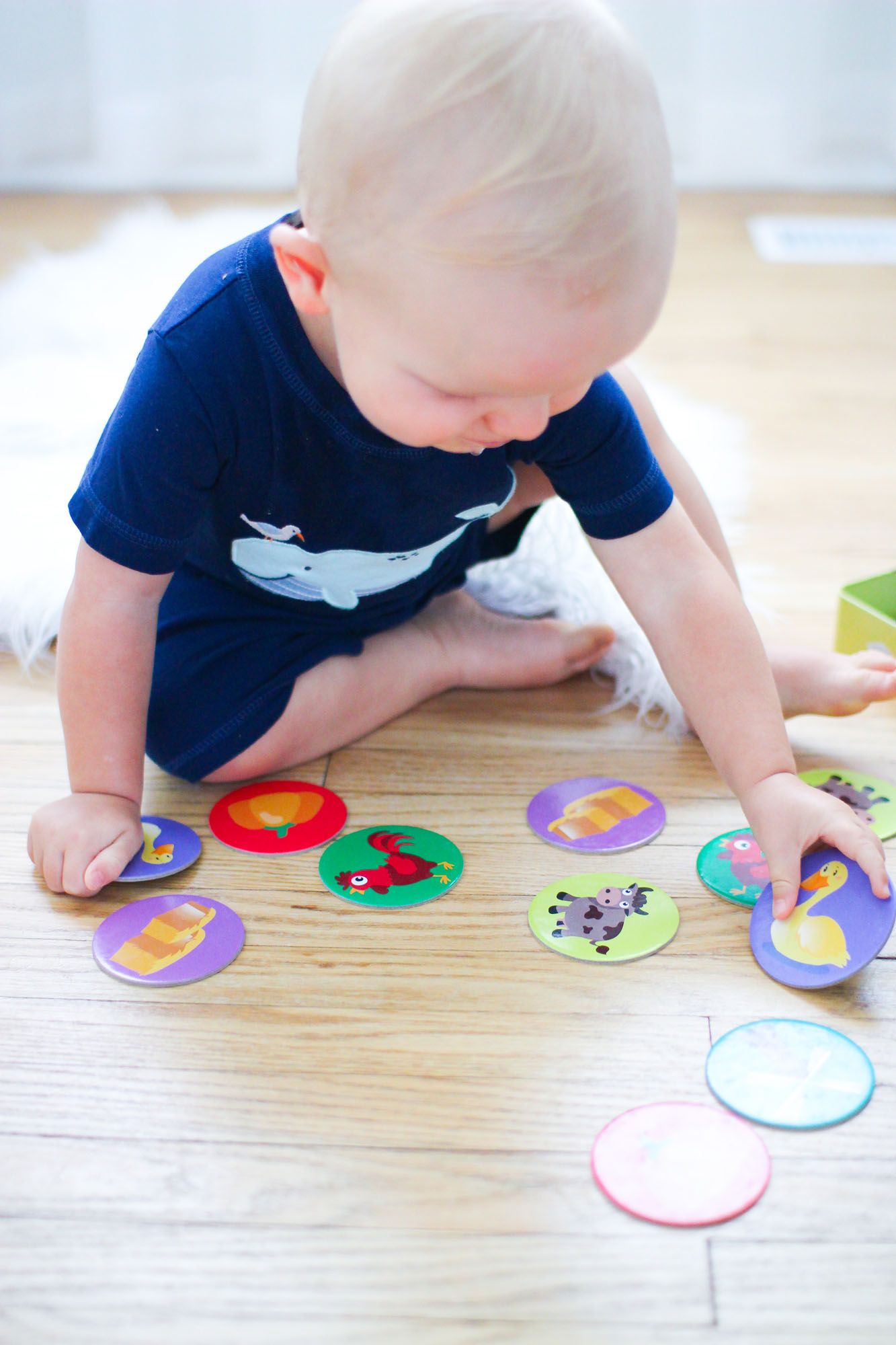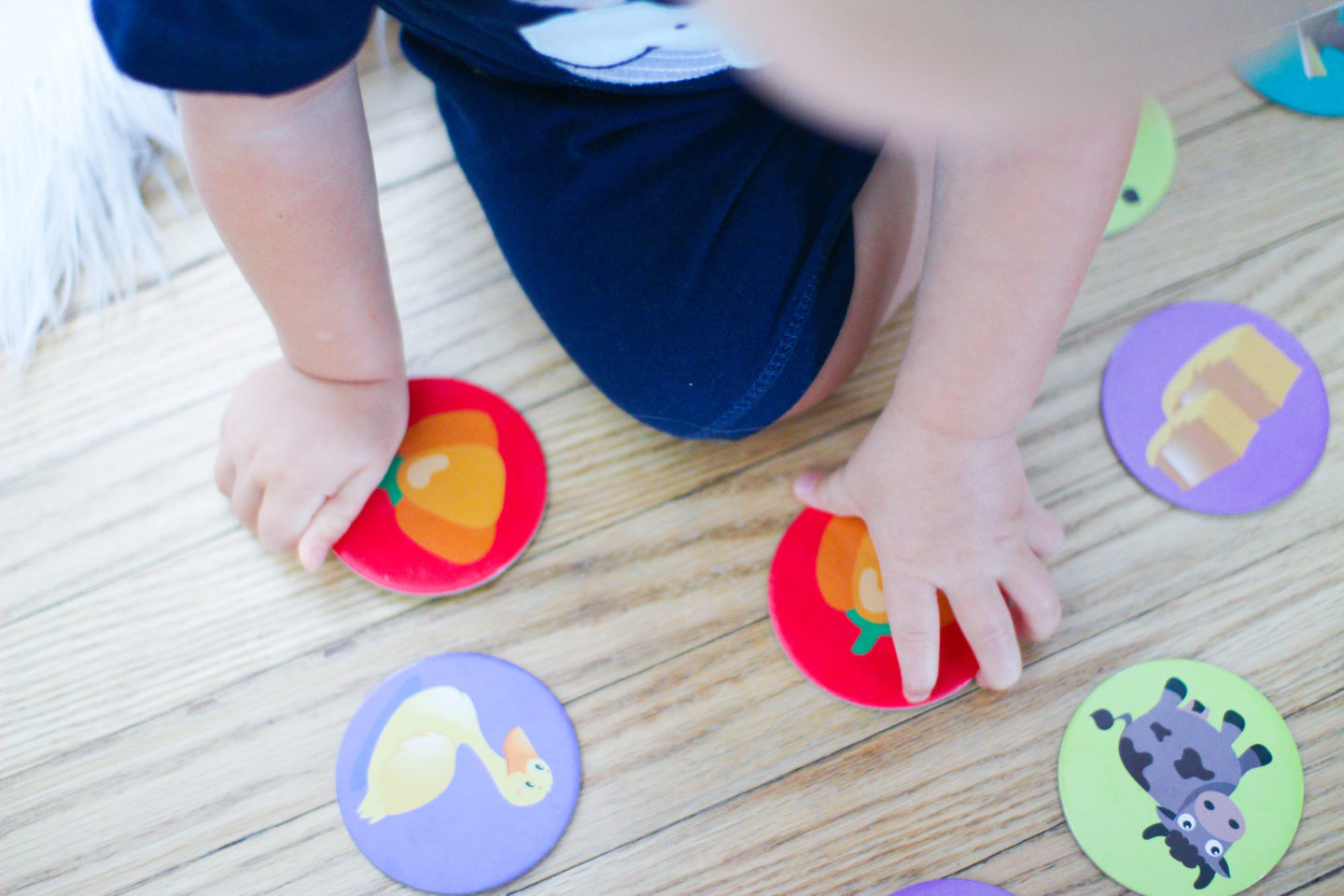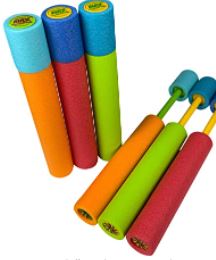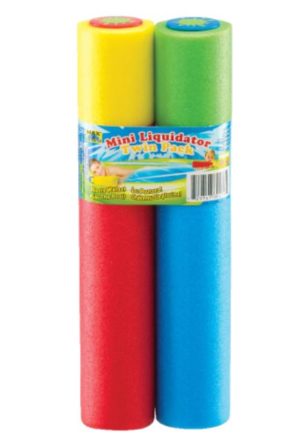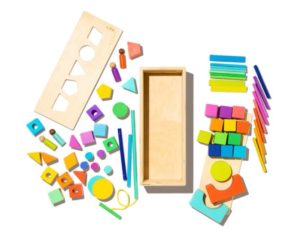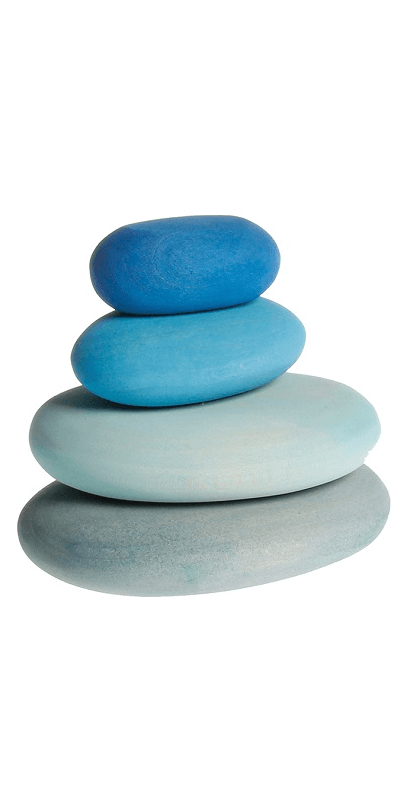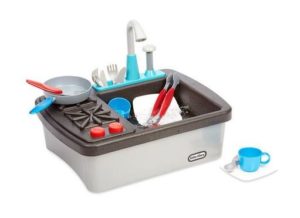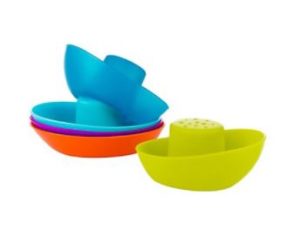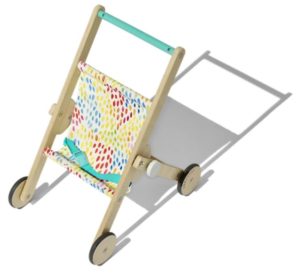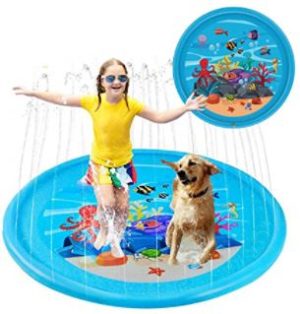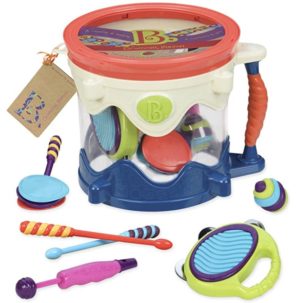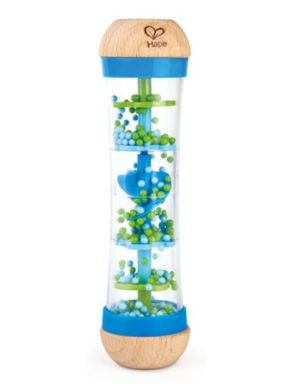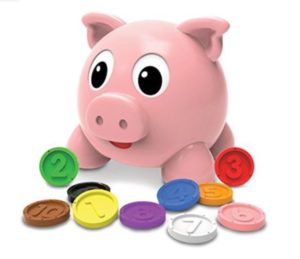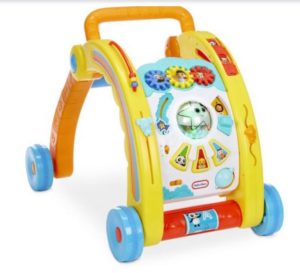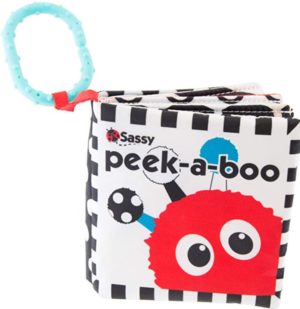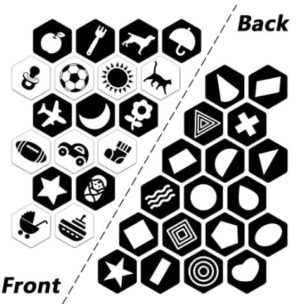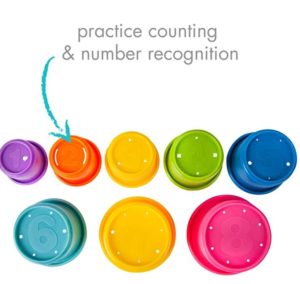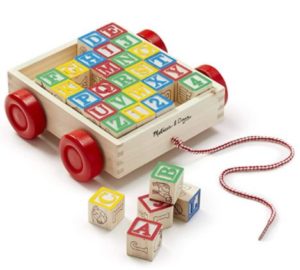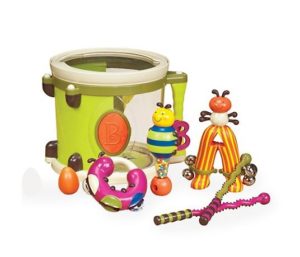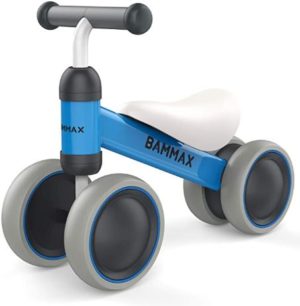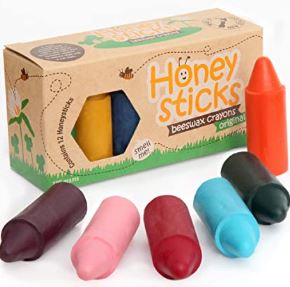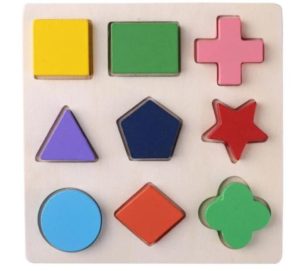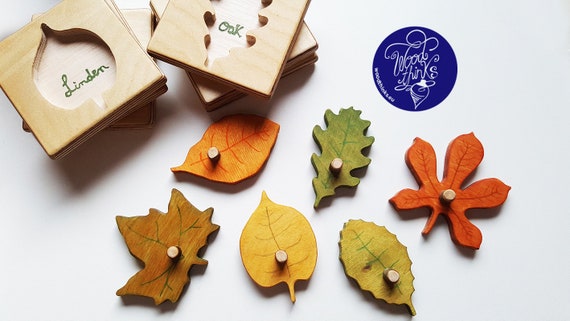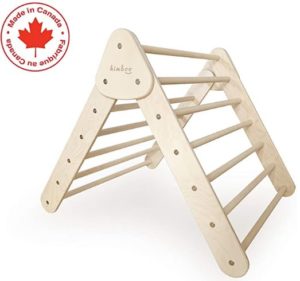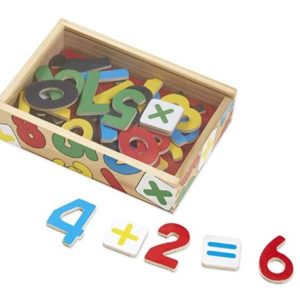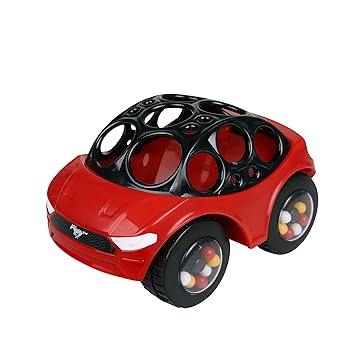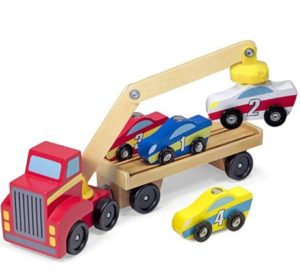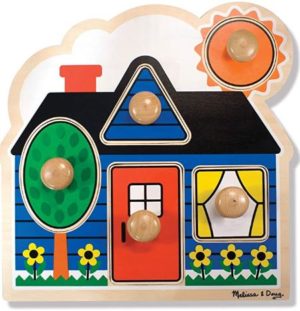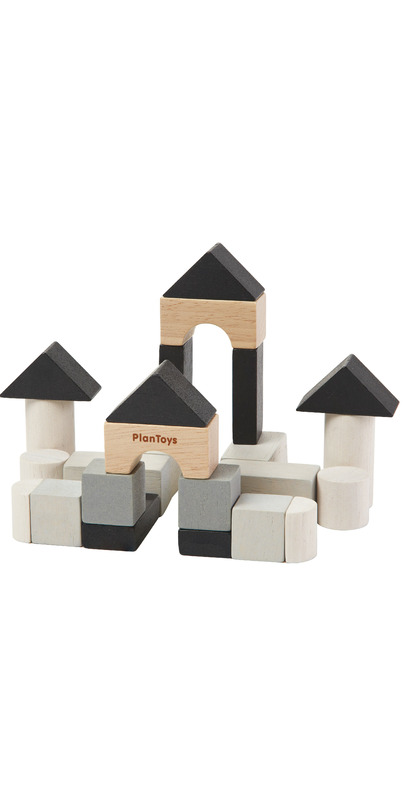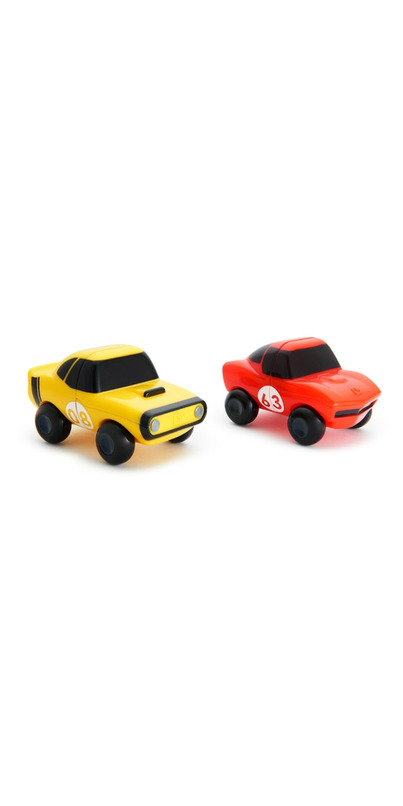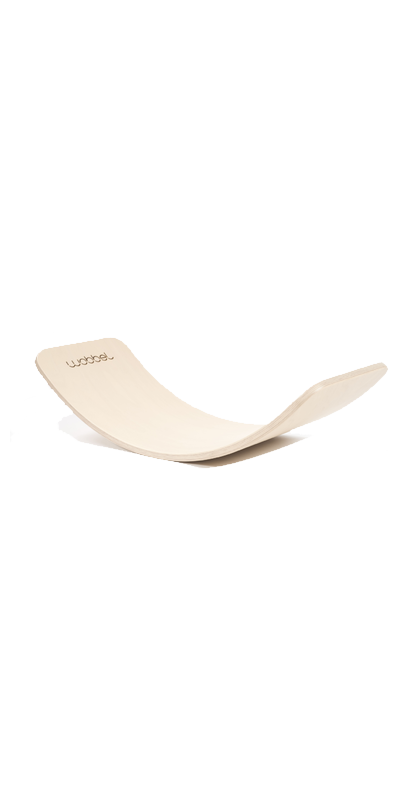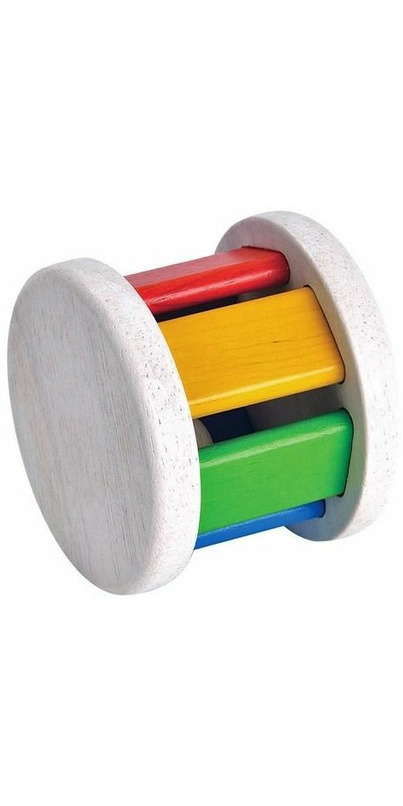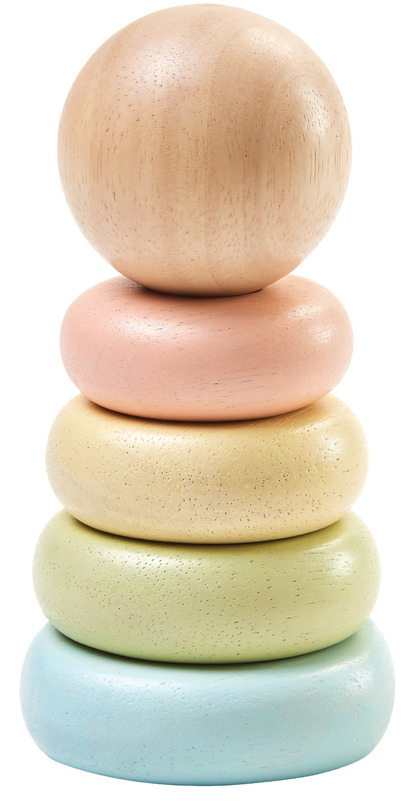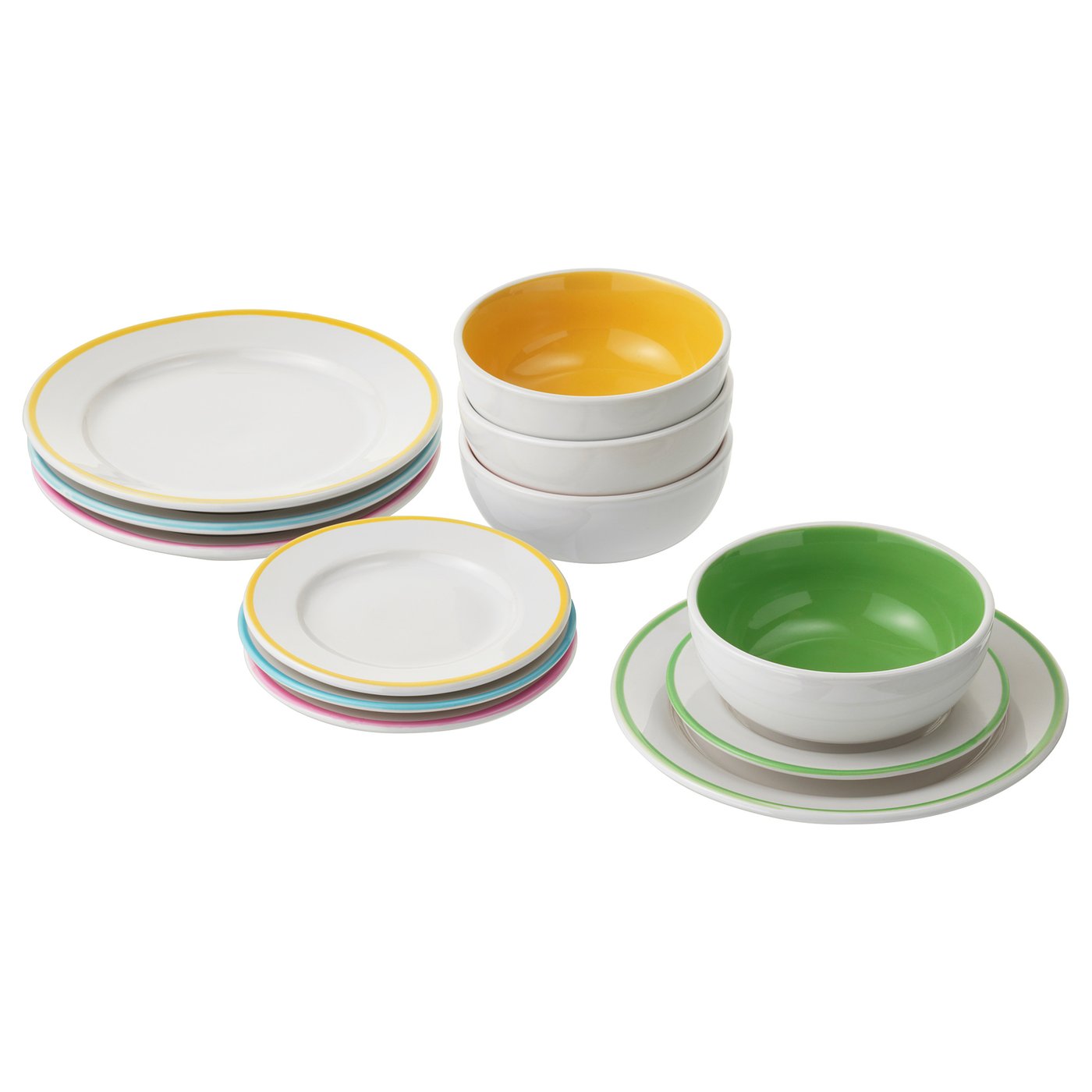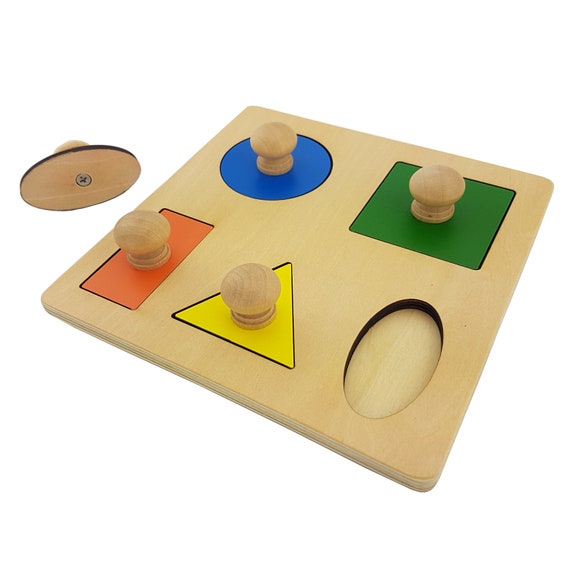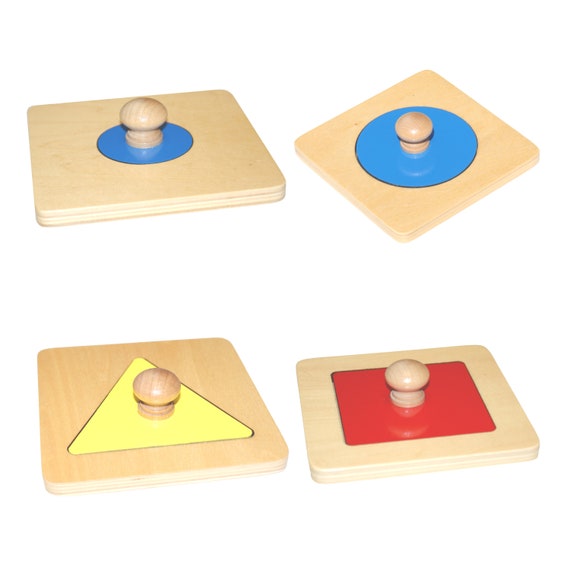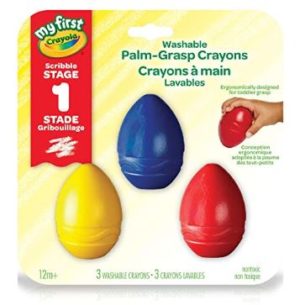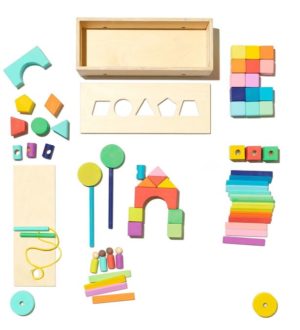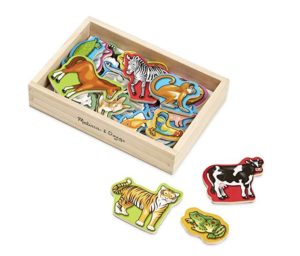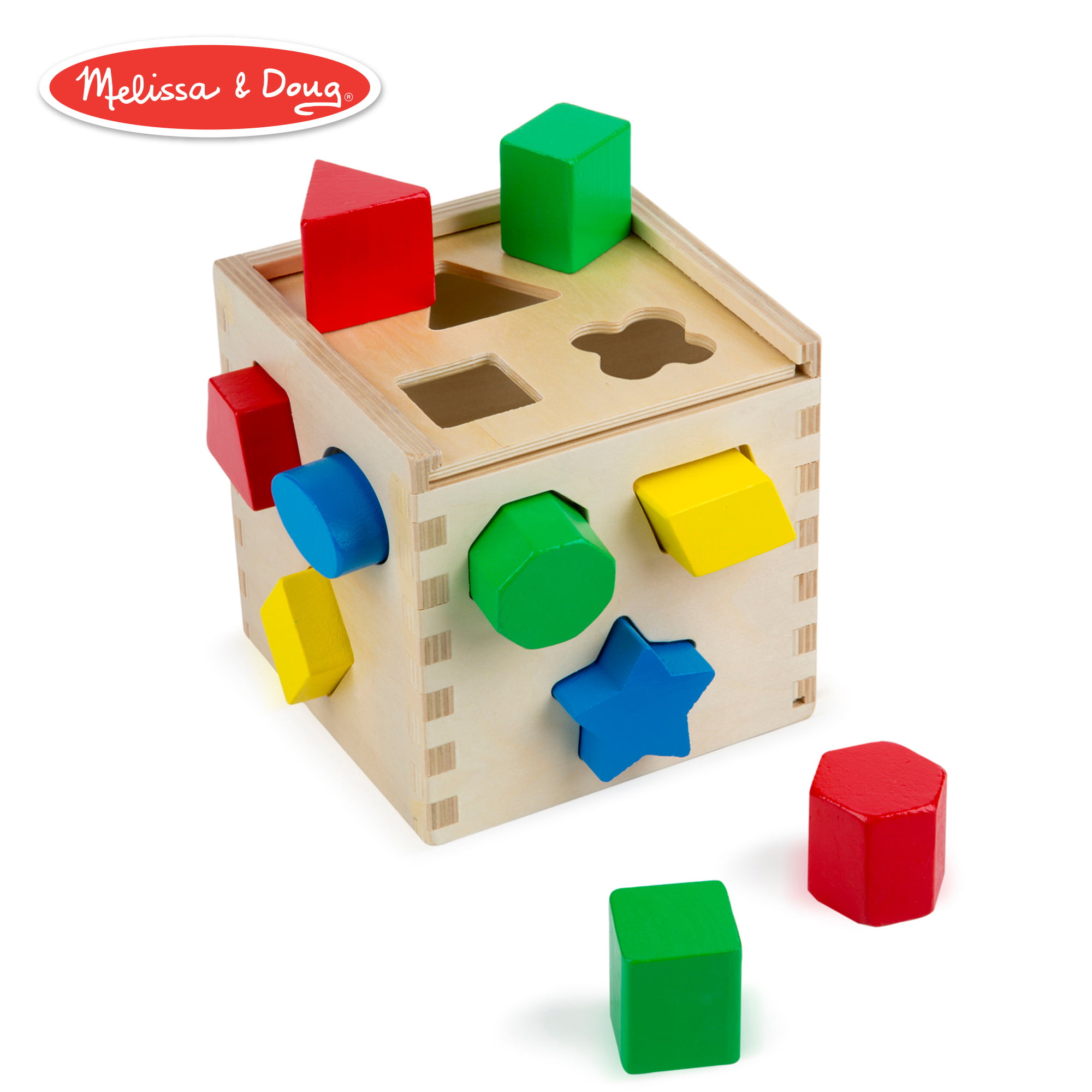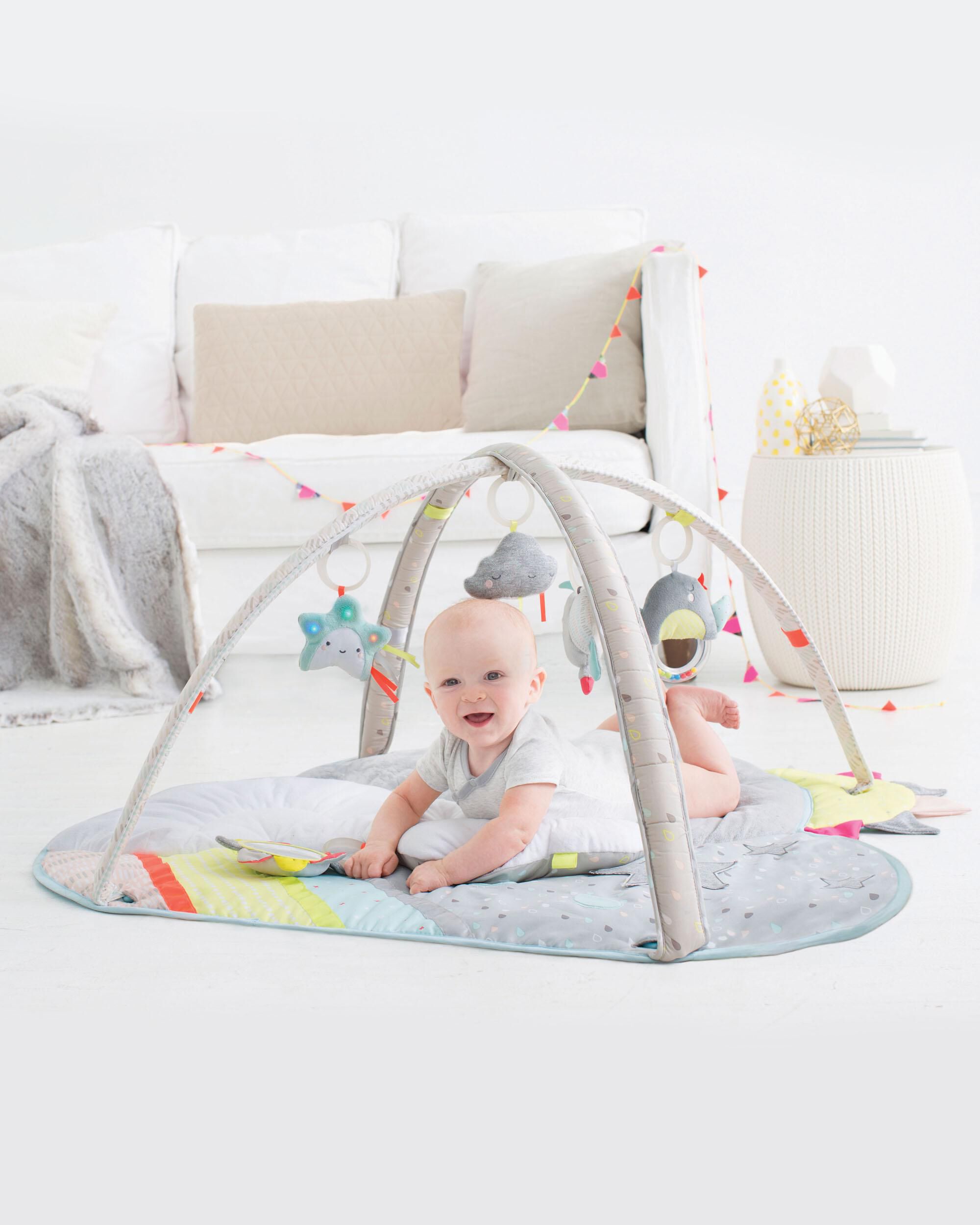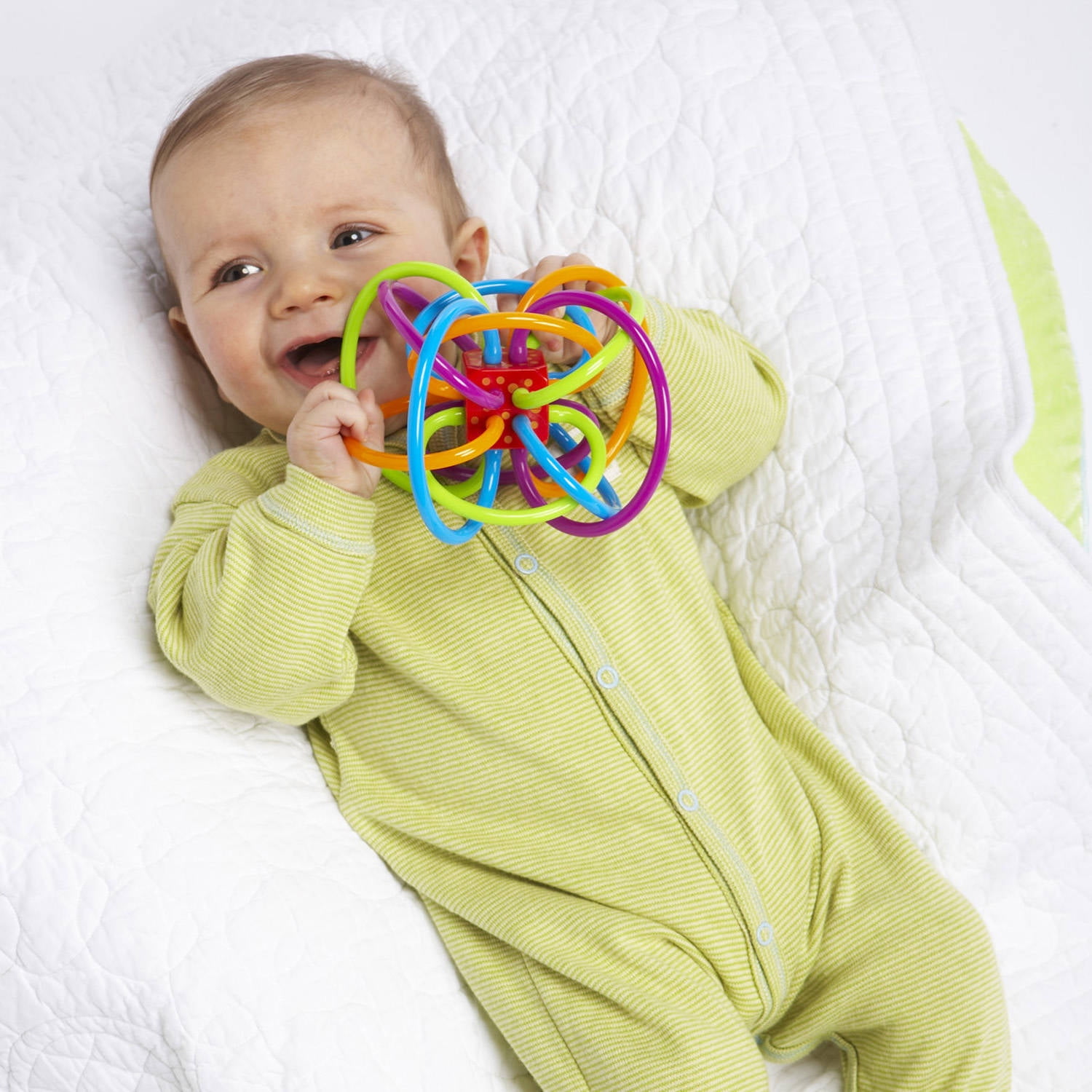The scoop on toy rotation, how to come up with engaging play ideas, and how to bring Montessori home.
In this post, I’m answering your questions about toys and play.
Just here looking for my link to Lovevery? Click the button below:
Does anyone else overthink toy purchases? Maybe you do, maybe you don’t (for the record, I do). I think in general, as parents and caregivers we want to make sure we’re purchasing the right toys for our children. Toys that not only keep them engaged but also capture their unique interests and rapidly developing skills.
Looking for a ring stacker as pictured below? This version is classic and affordable, while this one has wooden rings, similar to the Lovevery version I have.
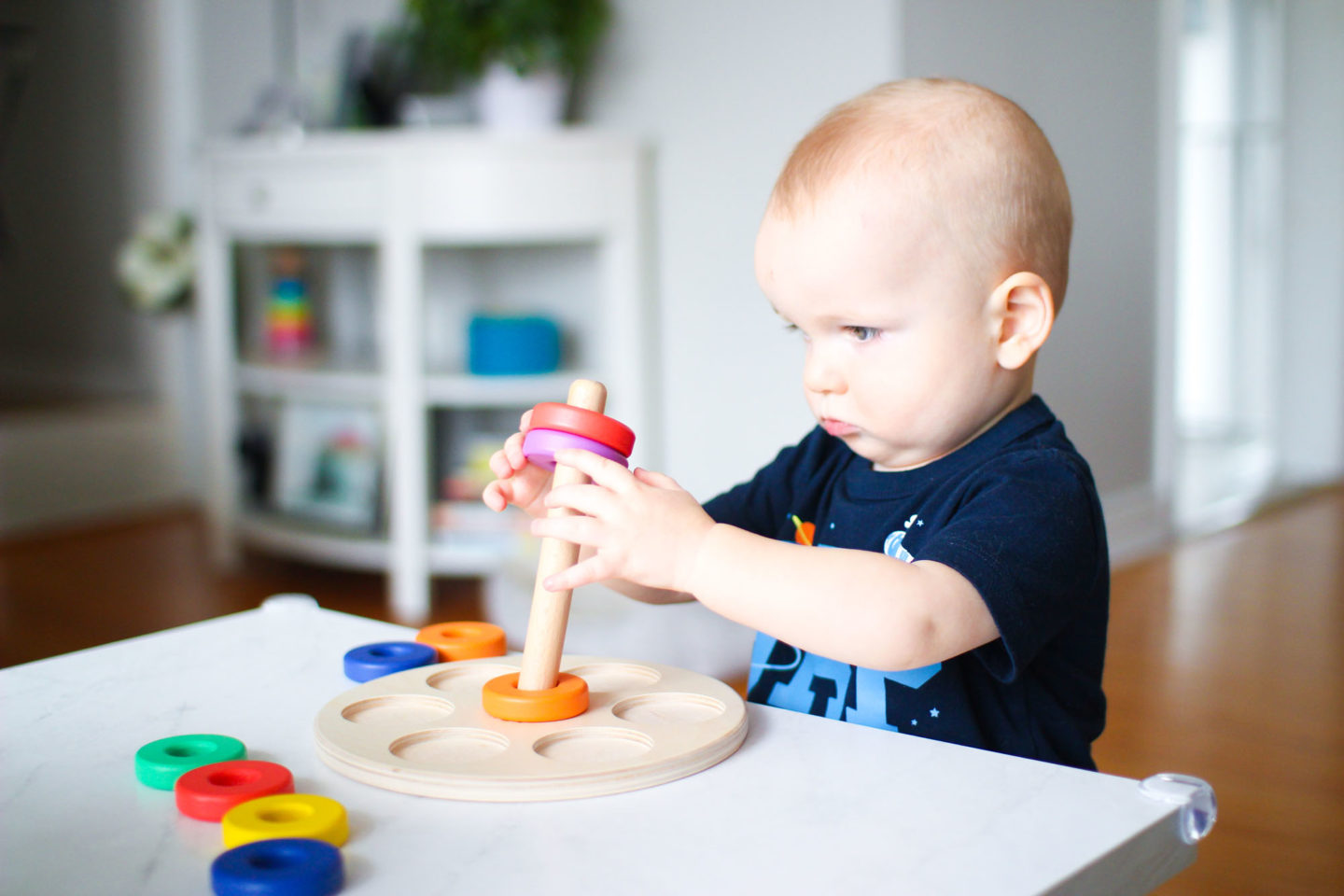
They are a subscription toy service created by early childhood development experts.
Play kits arrive at your door containing age-appropriate toys and can be purchased singularly or on a subscription basis
(I currently have three kits, they’re awesome).
We want toys that not only keep the child engaged but also capture their unique interests and rapidly developing skills.
Buying toys can be overwhelming. There are so many to choose from and it’s hard to keep up when your child is always on to the next thing to fulfill that developmental milestone. This may be especially true if like me, you think about toys are more than playthings or distractions. As a former teacher and early childhood educator (more about my background on my About Anna page), I take toys seriously (which I realize is kinda funny). But for children, toys aren’t just playthings, they as materials for learning. A child at play is a child at work!
I’ve been trying to share more of the activities we do at home on the daily and post the materials we use to support Lucas’ learning (who is 17 months currently, July 2020) in the STRUCKBLOG Shop. You can find the posts via Instagram Stories (you’ll find saved ideas in my highlights, Education and Education 2).
Looking for toddler activity inspiration? I share how I’m keeping Lucas busy with play almost every day! Check out my Instagram Stories (you’ll find saved ideas in my highlights, Education and Education 2).
Here’s what’s coming up next on the blog…
- A guest post/interview featuring a Montessori expert and author, Simone Davies of The Montessori Toddler, check it out here!
- A post dedicated entirely to diversity and inclusion materials that you can bring into your home and incorporate into your day with ease. And I’ll tell you exactly how to do it.
A Three-Part Toy & Learning Series
This post will mark the beginning of a three-part toy & learning series of blog posts. In conducting my research on the topic and with the rapidly changing landscape of our everyday conversations on social media, I have realized that there is just so much to cover when it comes to learning and play materials for little ones.
Following this post you’ll find a guest post/interview featuring a Montessori expert and author Simone Davies (which can be found here). I’ll also be dedicating a post entirely to diversity and inclusion materials that you can bring into your home and incorporate into your day with ease. Be sure you’re following me on Instagram, Facebook, and Twitter to get updates on when these posts go live.
Toys aren’t just play things, they are materials for learning. A child at play is a child at work!
I gathered your questions: Because you’ve told me toys are a topic of interest, I did an Instagram Live a little while ago asking you what questions or challenges you have surrounding toys. And you answered! So many of you sent in your questions, thank you!
Although I have two degrees in education, some of your questions were specific to the Montessori method of teaching. As such, I roped in Montessori educator (and my mom friend) Britta Flood of the Nido Room (who is opening up her own Montessori school in September 2020 in Amherstview, Ontario, Canada). I’ve also included her favourite toys shops in the conclusion of this post.
Thank you to Montessori educator Britta Flood for lending her time and expertise to the Instagram Live we did together and to this post.
Below you’ll find the answers to your toy questions that you asked Britta and I in preparation for, and during the Live we did on Instagram. Here’s all the info we spoke to during the live in case you missed it or want to reference it again.
He first interacted with this toy at 13 months, and at 17 months, he still enjoys it. Lately, he has been pairing rings and stacking two at a time.
The perfect example of a versatile toy that grows with your child.
Worth the investment.
I can’t tell you just how much I love this brand and their brilliant play kits, check them out here.
Alright, let’s get to your questions…
You asked, we answered.
1. On the topic of toy rotation:
Q: “I’ve heard a bit about toy rotation – some more information on that and how to make it work would be nice!”
Q: “I want to know your opinion on how many toys to have put for toy rotation, to keep them entertained and not overstimulated as I do loose parts, Montessori/wooden creativity toys. Trying to figure it all out!”
Why do it? To prevent overstimulation and promote engaged and focused play. If your child seems frustrated, disengaged, or is misbehaving/misusing toys, you should consider trying to rotate your toys. Trust me it works! And when they’re playing well it means you get enough time to finish your cup of coffee, you feel me, mama?
What is it? It means you have only some of the toys that you own out at any given time, and that you have a system for switching them out with strategic reasons for your given selection. Mine is a weekly rotation as this is doable for my schedule and sanity and in line with Lucas’ play habits (observing your child at play, literally just watching them without distraction can reveal a lot).
Toy rotation is where it’s at! I swear by it and do it every week.
Why Rotate Toys?
- A lot of people have an overwhelming amount of toys in their homes.
- It’s ok to have a lot of toys your kids like, but never have them all available to your child to play with at any given time.
- When everything is available and accessible for use, children often end up jumping around from toy to toy during play without ever getting fully engrossed in one specific toy for an extended period of time.
- They can also become overstimulated and overwhelmed if too many toys are presented as an option. This is often when we see undesirable behaviours arise.
- Toy rotation helps maintain focus, spark interest, and removes visual clutter, which reduces stress for the child because there are fewer options.
- It also makes it easy to clean up as no more than a few toys are out for play at any time.
Children can become overstimulated and overwhelmed if too many toys are presented as an option. This is often when we see undesirable behaviours arise.
How Do I Organize/Store Toys?
- First, bring it all to one place and do a keep, donate, toss clean up. Think about anyone you know who may be able to use the toy as a hand-me-down, whether you should keep it for a future child, whether you can sell or donate it, or if it’s garbage (any broken or missing pieces that can’t be repurposed.)
- Once you’ve got a solid ‘keep’ pile you’re happy with, go through and store/donate/sell anything that is no longer developmentally appropriate.
- To organize the remaining toys, you can use labeled bins in a storage area of your home. If you’re limited with storage or don’t have a lot of toys, you can use baskets to tuck things away (for now this is what I do).
- I use these Ikea baskets that fit perfectly into their Kallax shelving unit to store toys that are not in use.
- Should you like to, you can store/organize toys with like toys. Games and puzzles together, dramatic play (costumes, house items, dolls) together, etc.
How Do Choose and Display Toys Together?
- When choosing a selection of toys for play, try to have at least one from every category in any given space:
- Thinking toys: they target cognitive and fine motor development (puzzles, board games)
- Moving toys: they target gross motor movements (balls, cars)
- Pretending toys: they target social/emotional development and language development (dolls, books).
- Always ask yourself “what can my child actually do with this toy?” This may help you choose toys that complement one another and display them together. For example, if you’re taking out the dolls, what will the child be able to do with them? Make a tea set available as well and perhaps some play food so they can have a tea party. Another example would be cars, wagons, or trucks. Are there compartments for toy animals or people to fit into these vehicles? Set these toys out together. You could put 1-2 cars out with a basket of people/character toys next to them.
- When displaying toys, make them look inviting! Display them neatly on a shelf or table and make sure they’re disassembled. Puzzles, ring stackers, etc, can be taken apart so there is something or the child to accomplish (I leave the puzzle empty and place the pieces into a basket, tin, or tray). If a toy is already complete (the puzzle is done, the stacker is full), they may ignore it because it appears that there is nothing for them to do! This is, of course, dependent on age and whether or not the child has played with the material before.
- How many toys should you put out? Less is often more. If you too have the popular Ikea Kallax shelf or something similar, place one toy per square/shelf (so the empty puzzle with the box of corresponding pieces). Otherwise, try to keep them to a minimum. I have a 3ft shelf in my sitting room and usually, it only has 3-4 toys on it.
You can find an object permanence toy (learning that something doesn’t disappear just because it’s out of sight) similar to the coin drop featured below here. If you prefer a coin to a ball, this one is beautifully designed. Otherwise, something like this piggy bank toy will allow your child to experiment with the same concept.
It’s a three-dimensional puzzle that teaches the concept of rotation and how direction can change how something fits into something else.
The coins are fantastic because they are plain. They can be re-imagined to be anything at all!
This is another toy from the Babber Play Kit by Lovevery (meant for 13-15 months). Lucas still likes it at 17 months, once the coins are in there he investigates how the box opens and closes.
Always ask yourself “what can my child actually do with this toy?” This may help you choose toys that complement one another and display them together.
2. On the topic of inquiry-based learning:
Q: “My son is almost three, and very particular about cars and engines, but I have such a hard time coming up with educational activities based around his interests.”
Q: “how exactly do I follow my child’s interests? Does it have to be thematic or does something like pouring count?”
Inquiry-based learning is just fancy educator speak for following your child’s interests when providing options for play and learning.
What is inquiry-based learning? It’s just fancy educator speak for following your child’s interests when providing options for play and learning. Giving them opportunities to explore what they’re interested in or fascinated by is not only brilliant for their development but makes your job a lot easier as you’re not forcing them to engage in something you want them to do. Instead, let them do what they want to do in a safe and appropriate way.
Here’s a story from my kindergarden teaching days, as an example…
This story might help you to understand the concept of inquiry based learning with a real-life example.
When I was teaching kindergarten, I was super excited about this shape activity I came up with. I spent the night before class cutting out a variety of circles, squares, and triangles out of paper to set out on the craft on the table at school the next day. I was so pleased with myself, convinced that my genius craft activity was going to be a huge hit.
But It wasn’t. It went rogue. Here’s what happened…
I set up the table that morning in my classroom and after our regular morning routine, the kids headed off to play. As two little girls approached my craft at the table, I observed with tremendous excitement. But instead of sitting down and getting started with the craft, they scooped up one triangle each and headed off to the dramatic play area (where they kids usually played house).
I watched, bewildered, thinking “what are these girls doing with my amazing triangle cut outs?”
Off they marched to the house center as they began rearranging the area to suit their needs. They then headed off to acquire some crayons and marker and got to work on a craft of their own. After observing all of this, I approached them to find out what they were up to.
“We’re making an ice cream store!” they announced eagerly, as they continued to bring their idea to fruition.
And at that moment, as the teacher, I had a choice. I could either let them run with this idea that they came up with all on their own, or I could intervene and steer them back to the task I had originally created and intended.
I of course let them create their ice cream store, and boy was I ever glad that I did!
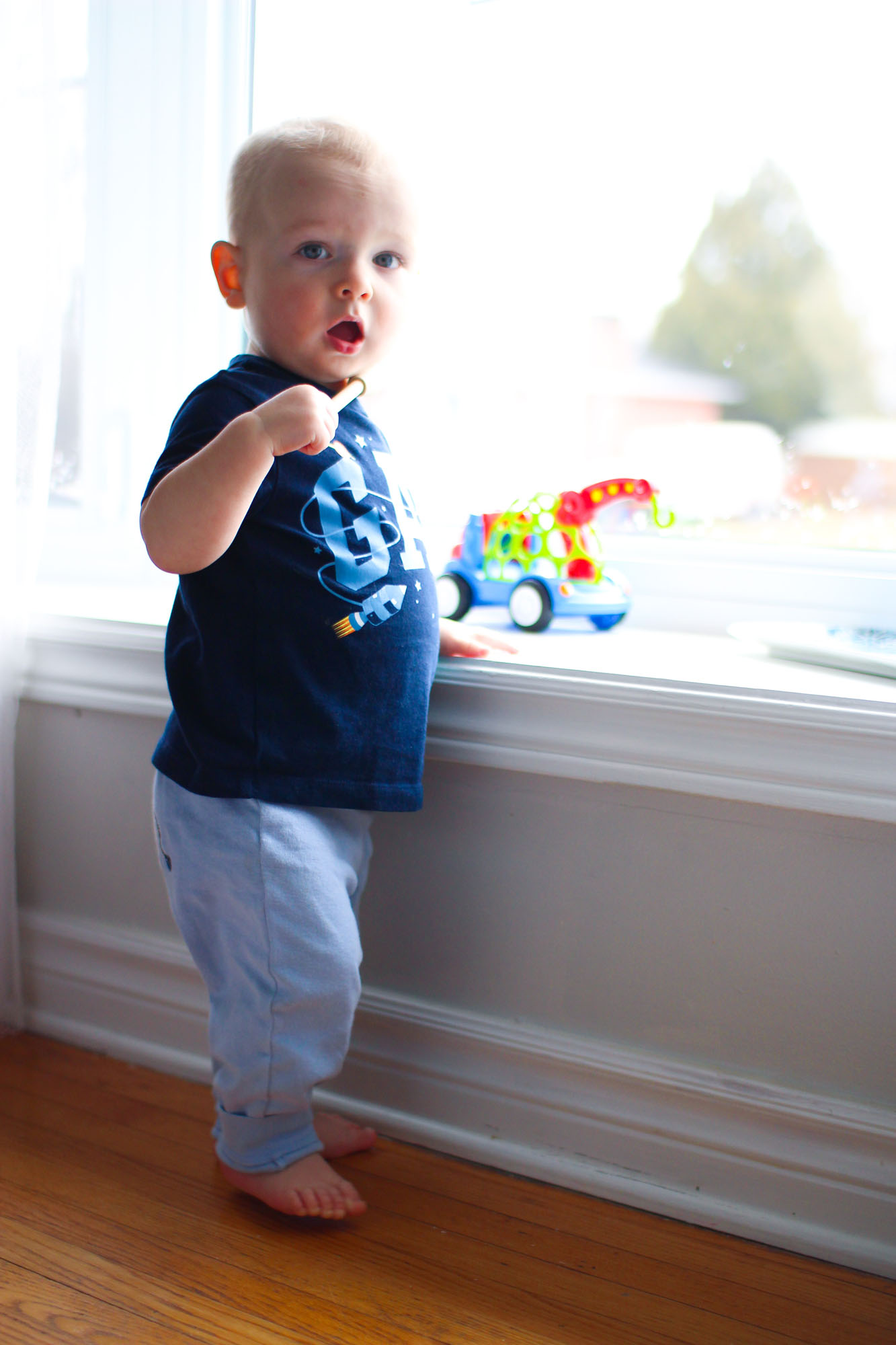
This ice cream store lived on for weeks, becoming a feature of our classroom talked about amongst the children in the kindergarten yard. As the days went on, more children got involved, creating ice cream cones from my triangles to be filled with various flavors of ice cream that they also created (which gave me a chance to teach them about mixing colours). They went on to make pricing decisions and sales signs and began selling cones to one another (which allowed us to learn about numbers and math). They gave themselves roles, playing salespeople and customers. The “ice cream chefs” would spontaneously come up with brilliant and unique creations such as “peanut butter jelly flavour” and “cheese pizza flavour” (which taught them how to communicate and work collaboratively).
Never in a million years would I have been able to come up with an activity that became so popular and through which I was able to teach them so much so effectively.
Through this ice cream store, they practiced their letters/language and numbers/math, made art, and developed their social, logical, and problem-solving skills. Never in a million years would I have been able to come up with an activity that became so popular and through which I was able to teach them so much so effectively.
And that is why inquiry-based learning is absolutely brilliant! Instead of bringing activities to the child, let the child come up with the ideas, and follow their lead. Observe them thoroughly during play, they display what they are investigating quite obviously most of the time. Play in parallel with your child to encourage them to explore a concept further however you can.
Instead of bringing activities to the child, let the child come up with the ideas, and follow their lead.
Lucas has become fascinated with the concept of matching and would show me pairs of toys and objects all day long.
So, I looked for a toy that would allow him to exercise this curiosity, hence this matching game he’s playing in these images.
He’ll be able to play it for years, later as a memory game.
You can find this set here on Amazon (split it in half and rotate the sets!).
Why is inquiry-based learning good for my child’s development?
- Encouraging your child to explore strengths and passions (and take healthy risks) can be a real self-esteem booster.
- It employs the child’s natural ability to wonder and investigate. Children are naturally curious, and inquiry-based learning develops problem-solving skills.
- Inquiry based learning engages social, emotional, cognitive, linguistic, physical, spiritual and creative dimensions of your child all at the same time.
- This kind of play helps the child to develop their own voice and agency, making them a better communicator and flexing their creative muscles.
How do I practice inquiry-based learning at home?
The answer, in three steps…
Step One: identify the interest. It might be thematic, like cars or dinosaurs, or it might be abstract, such as the concept of matching (finding two of the same), containment (placing balls in a bin/experimenting with volume), or trajectory (throwing food or objects). These are called schemas, and there is a really good article about them that includes lots of play ideas here.
Step two: brainstorm activities where the child has the opportunity to explore the concepts they are interested in. For example, here’s the matching game I bought for Lucas that I mentioned above. I purchased it since he was always walking around the house finding and showing me two of the same object.
Step three: create activities based around the interest. Using the example of cars as an interest, you could create an activity where you sort the cars according to colour, counting the cars (math), trace the shadow of the car outside (art), make them dirty( or use shaving or whip cream) and have the child wash them in water (you can even give them a toothbrush to try to use).
3. On the topic of Montessori at home…
Q: “Any advice on how to redirect your children’s play to a Montessori based play when they’re 16 months and up?”
Q: “how do I actually practice Montessori at home? I know it’s more than just wooden toys.”
I knew a little bit about Montessori from my days working as an ECE. Later on, when I worked as a professional development facilitator I provided learning opportunities to those working in the child care community in Kingston, Ontario. It was then that I learned a lot about the Montessori approach and got a chance to visit Montessori child care centres where I experienced firsthand what this type of learning consisted of.
The more I chat with my mom friend, Britta of The Nido Room I come to admire her knowledge and approach to Montessori-style learning. I myself have learned a lot about Montessori teaching from her, and she’s also inspired me to do a lot of learning on my own.
Here’s what I’ve learned from Britta, and from my further research regarding how you can live Montessori education at home if you’re not sure where to start. These aren’t the specifics (that’s coming up on the blog in an upcoming post), but a few ways you can incorporate best-teaching practices into your day with the little.
4 ways to think like a Montessori educator when engaging with your child:
- Start slowly if this is a new approach. You can’t go from hands-on help all the time to hands-off all of a sudden, which is encouraged in Montessori. Always encourage and promote independence, but don’t demand it all at once.
- Play on the floor with your child. I think we’ve all heard that floor time is critical for the child’s development. The floor helps them develop physical, social, and emotional skills. When you join them on the floor, you’re engaged, involved, and supporting this learning. You’re also providing yourself with the opportunity to observe them at play which will more easily inform your selection of toys and activities.
- Observe the child. Make sure you are present when playing with your child, don’t take over play or force the child to play a certain way. Simply role model and play side-by-side in parallel play with your child as a way of teaching them. They watch, always.
- Sportscast/narrate what your child is doing. Britta provided me with the following examples of this:
you can say “oh I see you’re trying to put the circle block in the square hole, or “oh I see it you’re becoming frustrated”, you can role model and show them how to put it in, and then you pass the toy back off to them. If they start to throw and become unfocused, don’t say “no, you don’t throw” instead try “I see you’re throwing that and becoming frustrated” or “I see that you’re throwing, would you like to put this away now?”
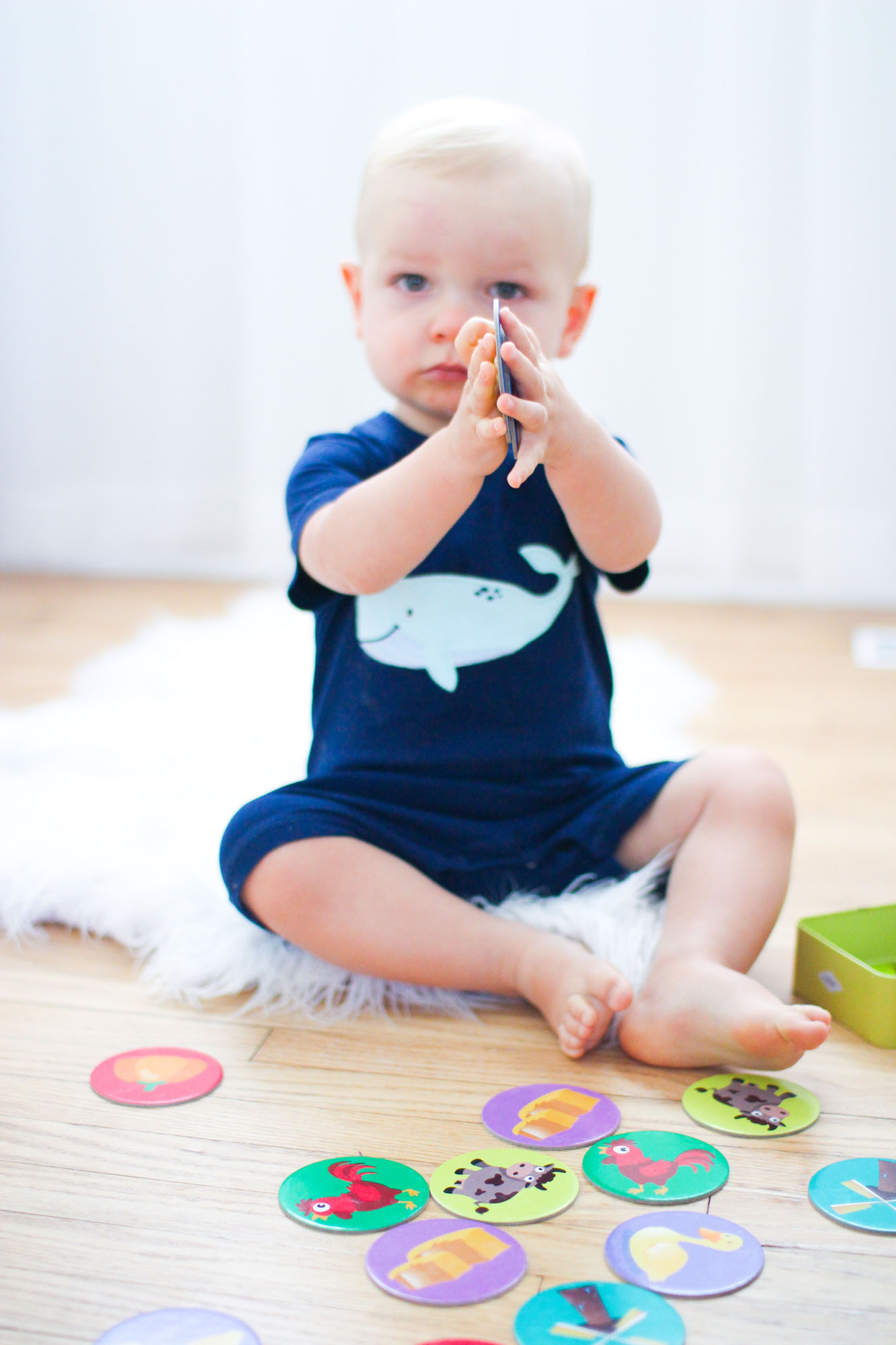
Instead of saying
“no, you don’t throw”
Try saying…
“I see you’re throwing that and becoming frustrated”
or “I see that you’re throwing, would you like to put this away now?”
Instead of saying
“no, you can’t have a snack”
Try saying…
“yes, you can have a snack, but after dinner.”
or “yes, you can have more food, but only once you’re finished what’s on your plate.”
4. On the topic of loose parts…
We received some questions about loose parts, mainly what they are and how to find them/incorporate them into your home. However, I’m not going to address that info here as I have an entire blog post dedicated to the topic!
Check out How to Create a Loose Parts Sensory Basket for Baby, which includes a list of over 50 items you can gather from around the house, outside, at the dollar store, or from your recycling bin. I also created a video where I talk about loose parts, you can watch it on Instagram and Facebook for more.
If you want to know more about loose parts, check out this blog post and my video on Instagram and Facebook.
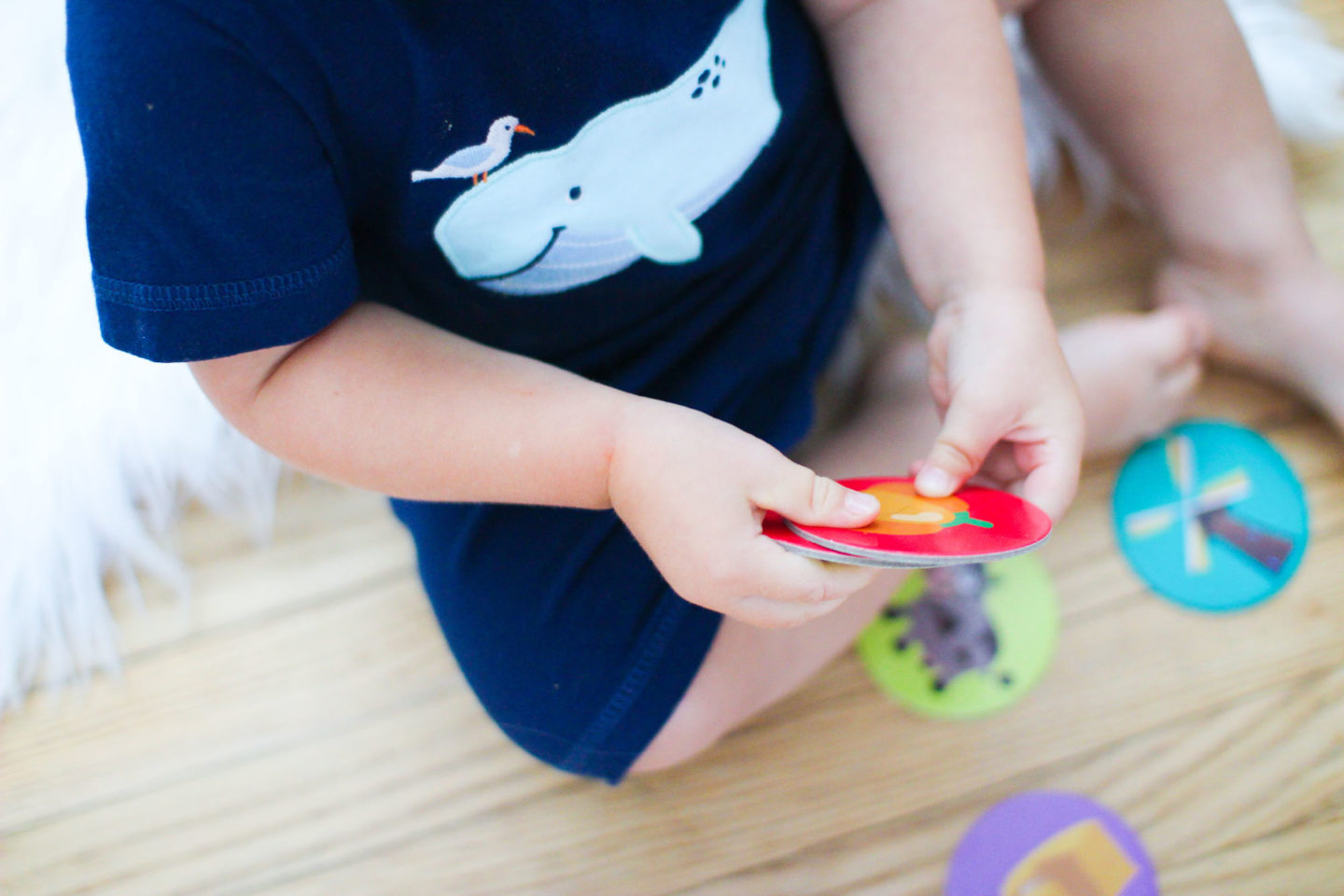
5. What are your favourite Montessori shops?
Britta has kindly shared all of her favourite sources for Montessori toys via her Instagram profile. Here are all the links you need!
- Modern Rascals: Clothes and toys, bright colours, fun patterns, ethical production.
- Go Green Baby: Natural and organic, cloth diapers, maternity & nursing wear, and sustainable toys.
- Maple and Lark: Wooden toys that spark a child’s imagination.
- Forest and Wild: Artfully curated, modern, sustainable designs for creative thinking and open-ended play.
- Wood Wood Toys: Montessori-inspired toys from Canada and around the world. Kid, environment & budget approved!
Honest to goodness these shops have the cutest toys! I myself am having a hard time not buying everything they carry (I predict I’ll be burnin’ a hole in my wallet).
And if you remember nothing else, remember this…
In general, when shopping for toys, keep these things in mind:
- Choose toys that are as realistic as possible: kids always want their toys to look like a mini-version of the real thing and are more likely to engage and play with the material that way.
- Natural materials: this is the emphasis in Montessori education, toys made of natural materials such as wool and wood are favoured, not to mention often more durable.
- Doesn’t have to be made of wood: if it’s made of plastic but it’s beautiful, that’s great! There’s nothing wrong with plastic toys, as long as they’re presented in a beautiful and inviting way.
- Safe & developmentally appropriate: always check that toys you are purchasing are displayed in an inviting way, are of course child-safe, while being enriching to your child’s interests and learning.
Should you ever have any toy questions, feel free to get in touch! I love connecting with other caregivers and I love hearing your play and learning ideas too. Be sure to send me a message via Instagram, Facebook, or Twitter, I’d love to hear from you.
Anna
MY MUST-HAVE TOYS
Disclosures: Lovevery products featured in this post have been gifted, thank you to the team for sending these absolutely fantastic play kits our way.
Anna is a former teacher and Early Childhood Educator with a Master’s and Bachelor’s degree in education. Much of this learning and experience informed the content of this post.
All opinions and comments are my own unless otherwise stated. In this case, some of the info above was shared by Britta Flood, thank you Britta!
STRUCKBLOG uses affiliate links. For more information about this and the use of sponsored products please see my disclaimer page.
Want to see your brand/business reviewed on STRUCKBLOG? Visit my Work With Me page to see more of my work and to download a copy of my Media Kit.

